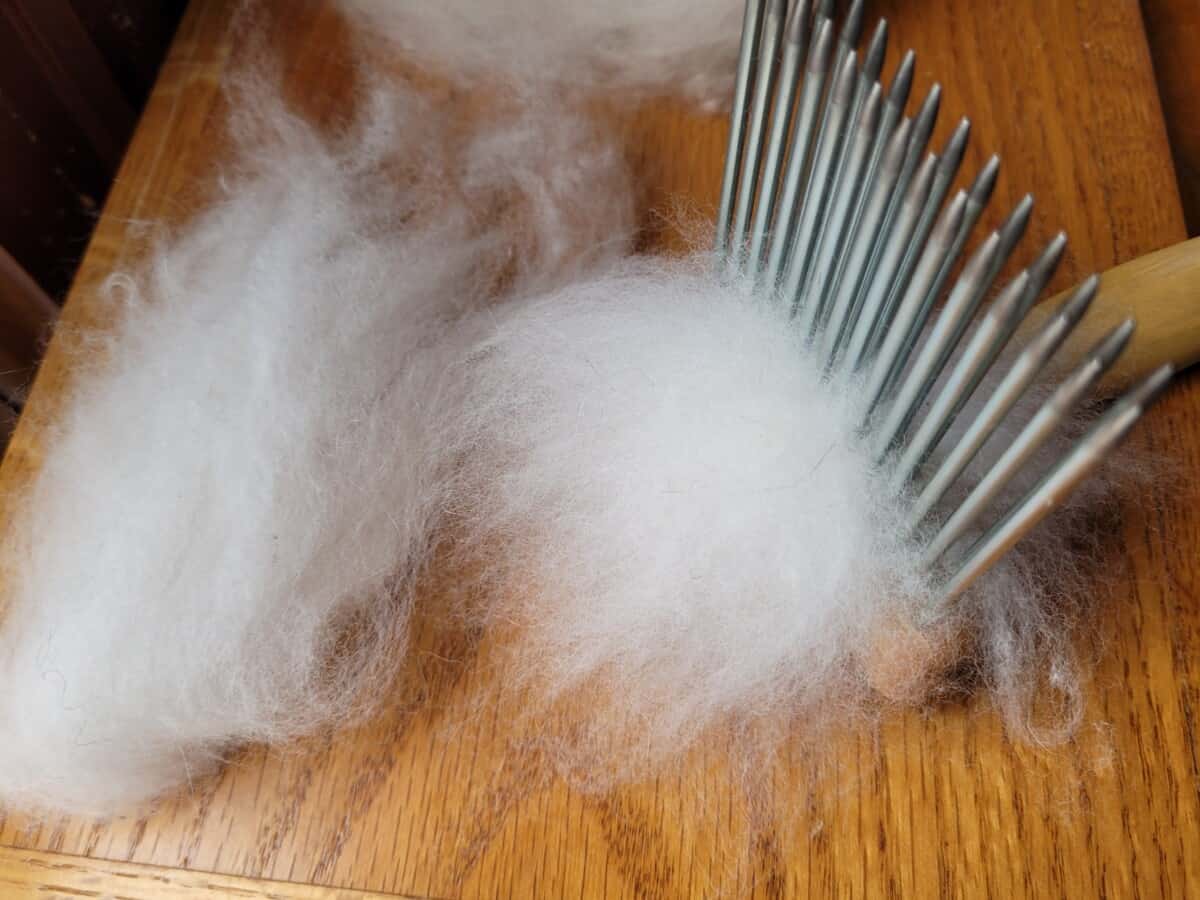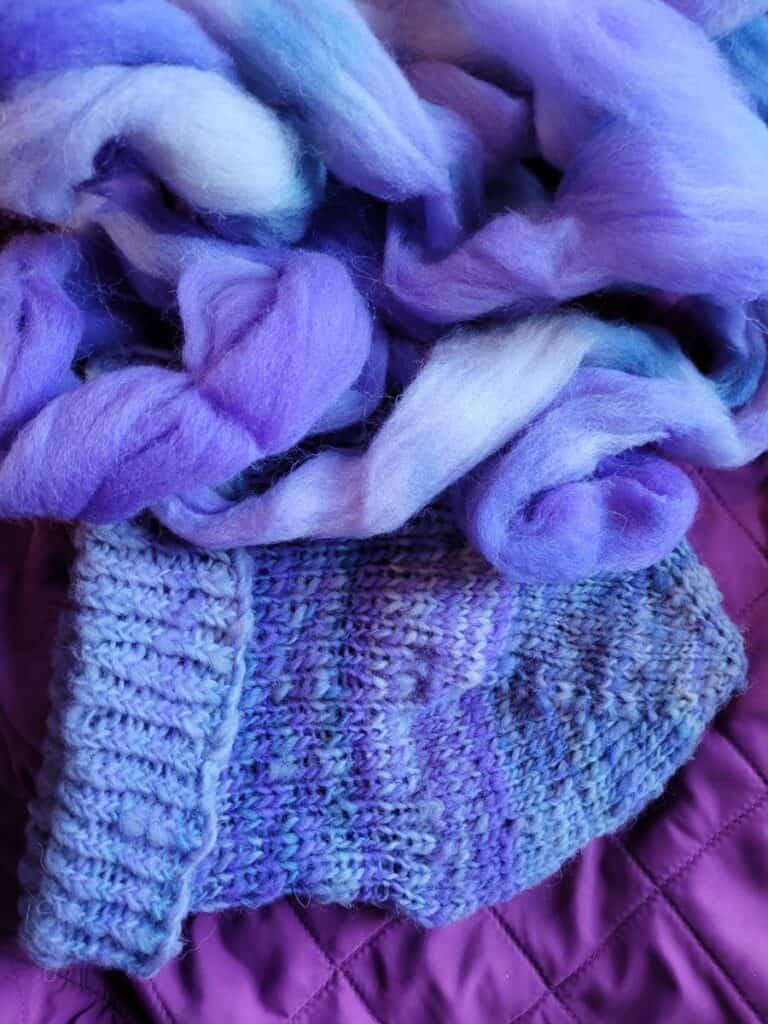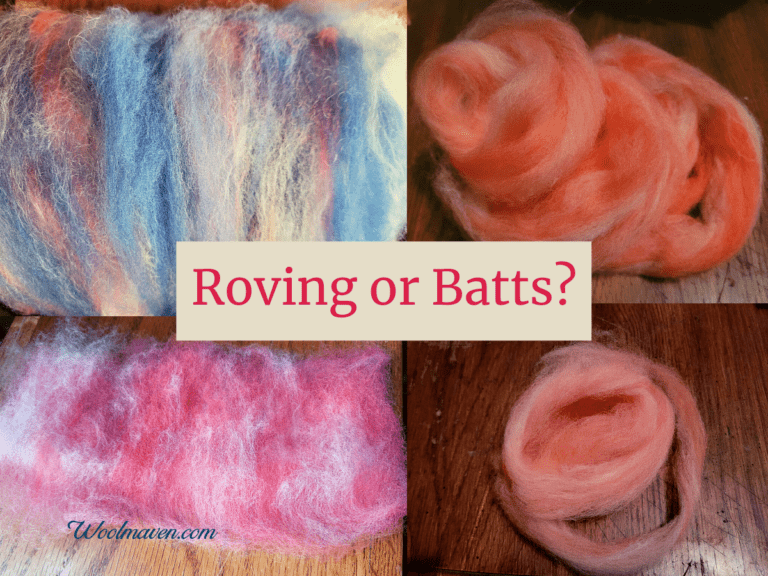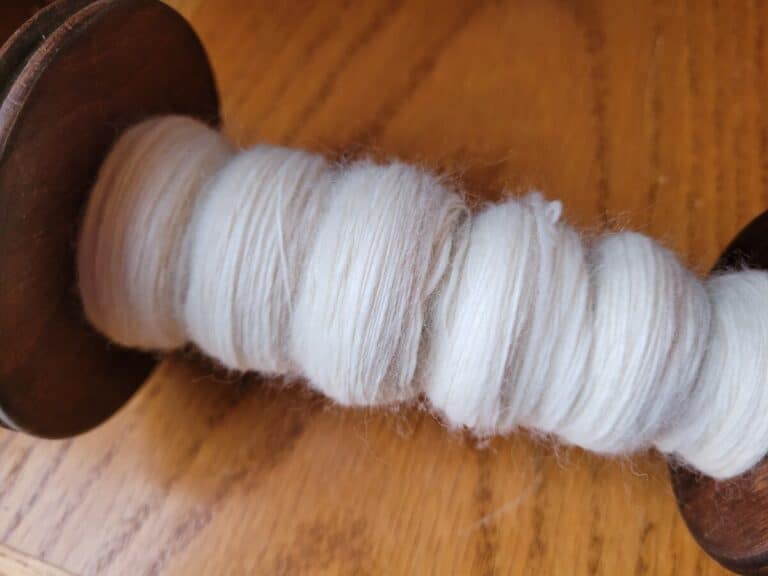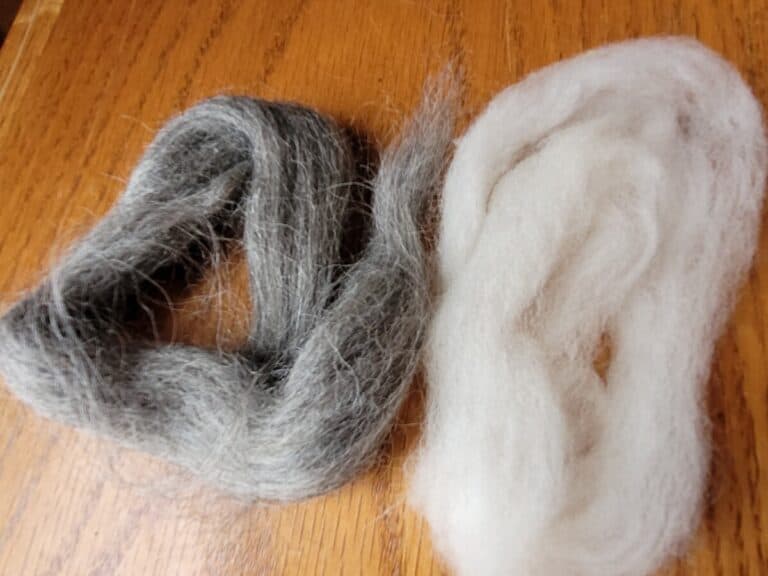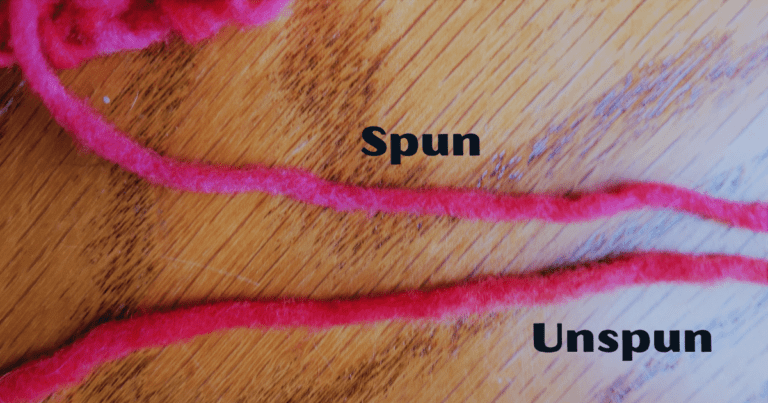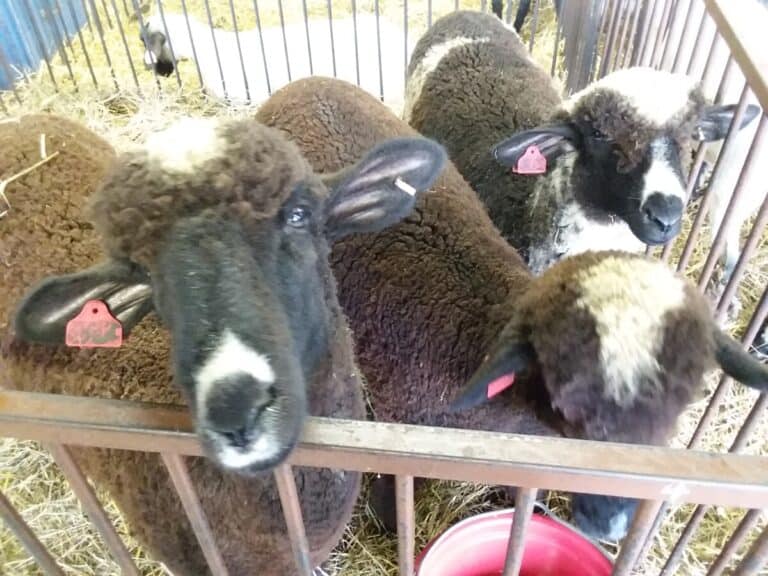Pros And Cons Of Spinning Angora Rabbit Fiber
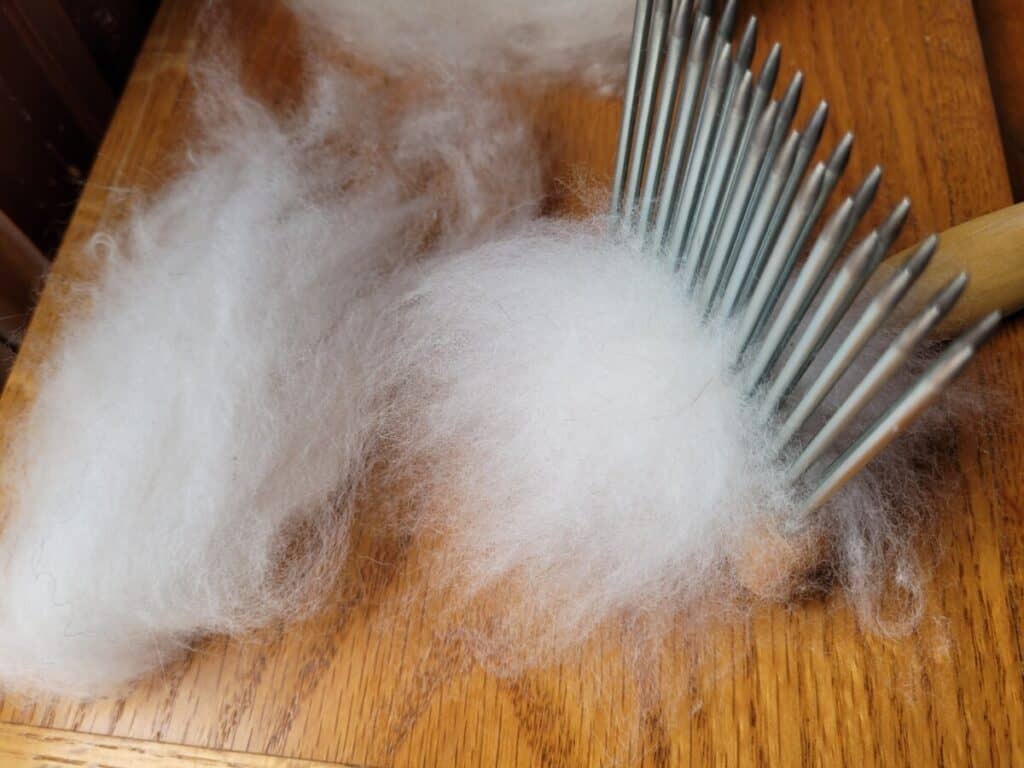
Considering getting some angora rabbit fiber for your next project?
You’ll want to know both the high points and the not so great points about angora so you can decide if working with angora is right for you.
How To Hand Spin Angora For Beginners gives you beginner level tips to help you on your angora spinning journey.
Pros of spinning angora fiber
Angora wool is a wonderful fiber to work with, and once you get the idea of how to spin it, you’ll love the luxury of angora, too!
Which Angora Wool Is Best To Spin? goes over the high points of the fiber from each breed of angora rabbit and how to pick out great angora wool to work with.
Nearly unparalleled softness
Angora sets a high bar when it comes to softness, we are talking finer than cashmere! That is pretty darn soft!
It is amazing to me, still, that the things I make with angora feel so nice! I love the soft, silky feel of yarn, which is something I can’t quite get from the rest of my stash.
Angora fiber is a renewable resource
Angora fiber keeps growing, every year, season after season.
Whether the fiber is harvested or not, it keeps being grown by the rabbit for as long as the rabbit lives. Even rabbits that shed, will soon have a new coat!
Since the wool keeps growing, angora fiber is a renewable resource. As soon as it is cut, it will regrow, just like your hair.
This differentiates angora from some of the synthetic fibers, for instance nylon, which is made from a coal and petroleum base.
Can support small fiber businesses
One of the more interesting aspects of angora fiber, at least in the U.S., is that angora rabbit fiber can fairly easily be sourced from small fiber producers.
These small fiber producers are small craft businesses that specialize in angora rabbits that they raise themselves to spin or sell the excess fiber for income.
Small fiber business owners love their rabbits and truly believe in spreading the word about the beauty and versatility of angora.
This is the type of business that I like to support with my purchases.
For a specialty fiber like angora, it’s pretty easy to dig around a bit and find a fiber business that you feel good about supporting, too.
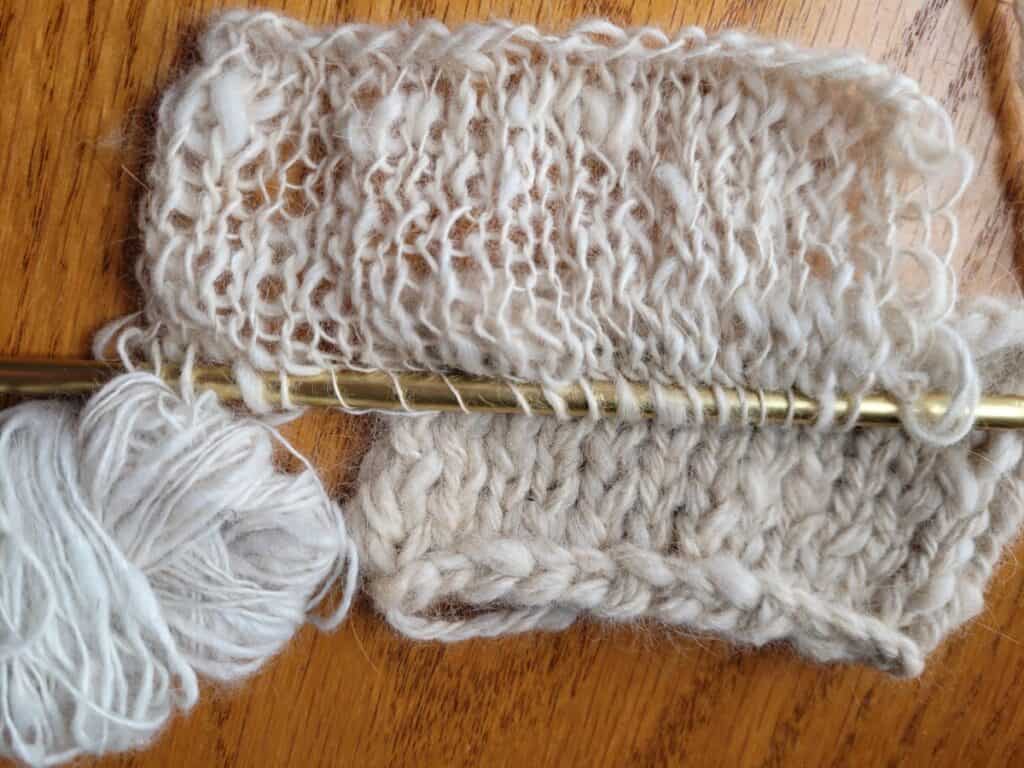
This post contains affiliate links, which means I receive commissions if you choose to purchase through links I provide (at no extra cost to you).
Versatility of angora fiber
Angora wool is versatile. It can be used in many different applications for your wool crafting.
Blendable Angora wool is blendable. Of course you can work with 100% angora wool if you choose, but angora also blends well with other fibers like a finer wool.
I find angora fairly easy to blend with wool, using either hand carders or a drum carder. I normally prefer the drum carder, just because it’s easier.
My most common blend is around a 50% wool and 50% angora blend, chosen because this is the feel and the elasticity of yarn that I was looking to knit.
100% angora knits up just fine, but it tends to be a bit less elastic than I like, so mixing with a little wool fixes this problem for me.
Feltable Angora wool is feltable. This can be a good thing or a bad thing, depending upon what you meant to do!
Dyeable Angora is definitely dyeable.
Even though there is naturally colored angora wool available, you could also choose to dye the angora for even more color.
If you plan to dye your angora fiber, use the same acid dyes that you would use for other protein fibers, like sheep wool.
Which Angora Rabbit Wool Is Best To Spin? helps you choose the type of angora fiber that will best suit you and your project.
Angora yarn makes warm garments
If you are looking for delicate looking, yet warm items to knit, you have come to the right place!
Because each fiber of angora is hollow, it traps more air than a solid fiber, which makes a garment made from angora warmer than other fibers.
Cons of spinning angora fiber
While angora is a wonderful fiber to incorporate into your spinning, it does have a few drawbacks.
Cost of the angora
Angora is an amazing fiber, that comes with a fairly high cost per ounce, as well.
The higher cost is due to the care needed for the rabbits, including hand shearing, and that the yields per rabbit are low per shearing compared to something less expensive, like wool.
Ease of spinning
Angora can be tricky to get started spinning!
It took me several attempts and quite a bit of frustration to get to the point where I could spin an acceptable 100% angora yarn.
One of the things I did to help me spin 100% angora is to start with a 50/50 blend, then use a 25/75, then try again on 100% angora.
This step up to 100% angora method worked well. I’m not sure if I got used to working with the angora or the practice gave me the confidence I needed.
Either way, working up to 100% angora seemed to make a difference to me.
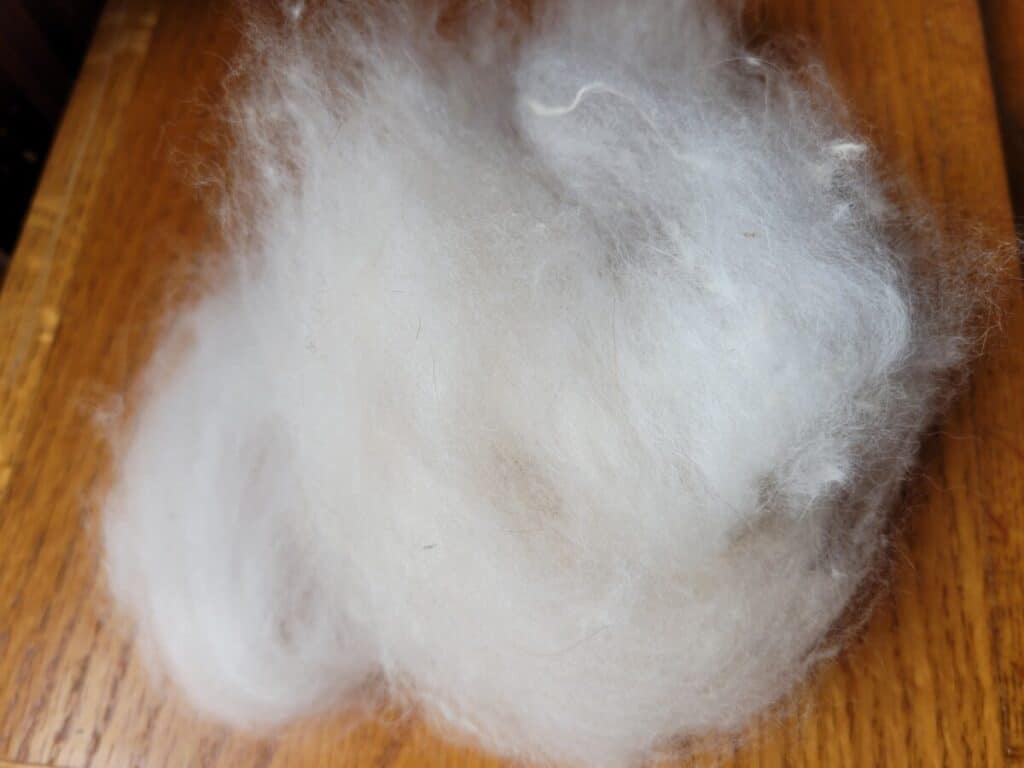
No elasticity to yarn
Angora yarn will have no elasticity. This means that whatever you make out of the angora will not bounce back into shape.
If you need some elasticity to your angora yarn, consider putting in some wool, to make an angora blend that more suits the needs of your project.
You can also carefully choose the pattern you use so that the lack of elasticity accentuates the finished project.
Yarn can shed
Angora yarn can shed. This means that the yarn that you put so much effort into and are so excited to use can start to lose the angora fibers!
Since angora is known for shedding, you spin it tightly and make sure to full the yarn well, both in the wet setting and thwacking.
During the wet setting process, you help the yarn hold together by alternating between hot and cold water baths.
Then you’ll be thwacking the yarn to bring out the halo and further help the fibers in the yarn hold together.
Flyaway fibers
Angora fibers have a bit of a flyaway tendency, which is more of a concern for anyone carding their own angora wool.
If you purchase roving, this will be less of a problem for you.
Another part of the flyaway issue, more of the fiber having a mind of it’s own and sticking to odd things, seems to be related to static.
Once again, you are more likely to have problems dealing with static if you are preparing your own angora for spinning, since the carding or combing is where the majority of the static is generated.
Shorter staple length
Angora is a shorter staple length fiber, it will have any of the challenges that a short fiber normally has.
Plus angora is slippery, a challenge that is unusual for shorter fibers but something to be expected with angora.
Gentle handling of garment is required
Anything made out of angora will felt easily. This makes gentle handling of your finished garments a must.
Of course, if you already have a few handmade woolen items, you know how to care for them! This is just a reminder that angora requires your most gentle care and washing practices.
For another perspective on angora, read The Joy Of Handspinning: Angora, which is a nice overview of working with angora fiber for handspinners.

